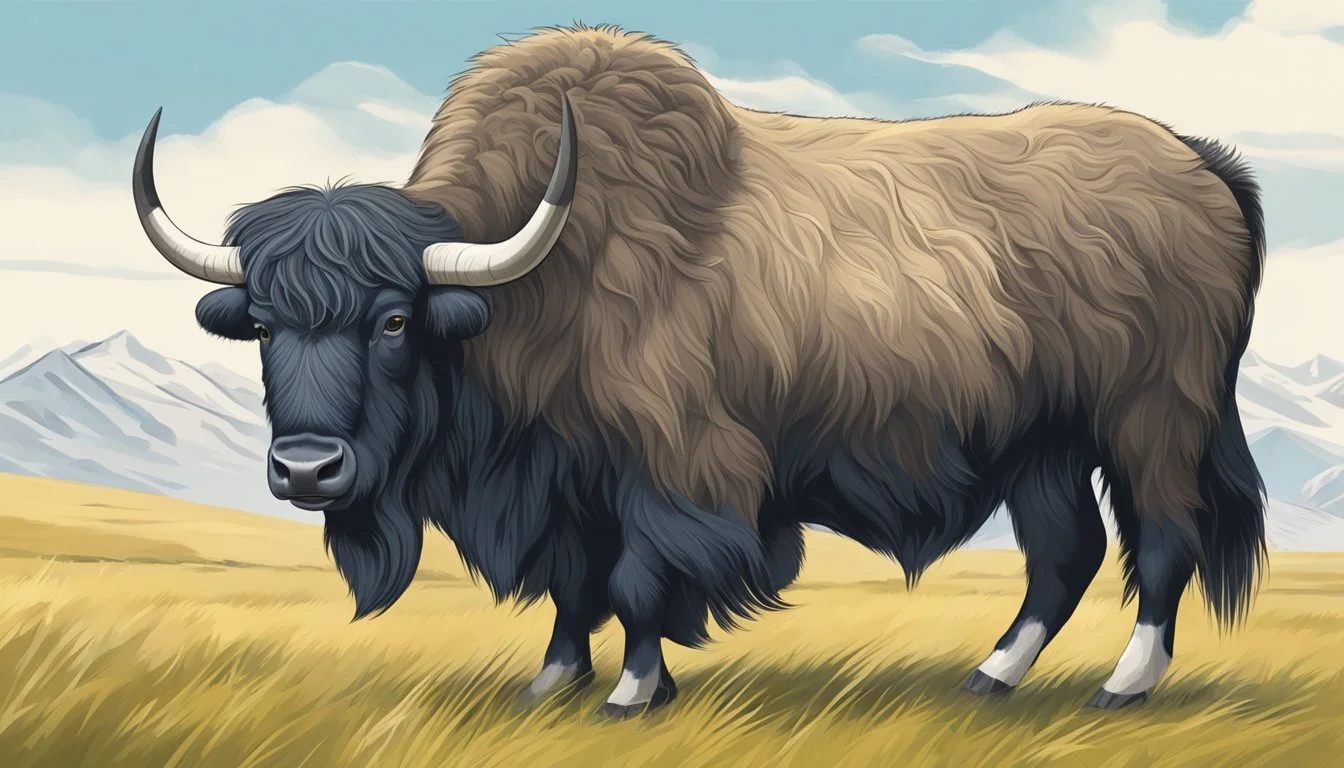Yak Meat The Tibetan Staple That's Lean and High in Protein - Nutritional Benefits and Culinary Uses
Yak meat is a key component of traditional Tibetan cuisine and offers a compelling alternative to more commonplace meats like beef and chicken. Derived from the hardy bovines that dot the Tibetan Plateau, this meat is not only a cultural staple but also a powerhouse of nutrition. The high altitude and harsh climates of Tibet have made yaks an indispensable part of life there, with their meat serving as a crucial source of protein for local populations. High in protein and lean in fat, yak meat presents a healthy option for those looking to maintain a balanced diet.
With a rich nutrient profile, yak meat stands out due to its essential amino acids and lower cholesterol levels compared to other red meats (What wine goes well with red meat?). Its composition contributes to its status as a healthy choice that doesn't sacrifice flavor for nutrition. The taste of yak meat is often compared favorably to beef, albeit with a fuller, more robust flavor that underscores its exotic origin. Its versatility in cooking is also noteworthy; yak meat can be enjoyed in various forms, from being thinly sliced for stir-fries to being stewed alongside a mélange of vegetables, herbs, and spices.
This judicious balance of taste, nutrition, and cultural significance places yak meat in a category of its own within the culinary world. Its growing popularity beyond Tibetan borders is a testament to its potential as a sustainable, healthy protein source for those seeking dietary diversity and a touch of the Himalayan essence in their meals. As a food source that has sustained generations, its benefits extend beyond mere sustenance, offering a glimpse into the Tibetan way of life and the resilience of its people.
Yak Meat Fundamentals
Yak meat represents a lean and protein-rich alternative to traditional red meats like beef and pork, offering a unique combination of nutritional benefits and cultural significance. It is derived from yaks, a hardy species well-adapted to the high altitudes of the Tibetan plateau.
Nutritional Profile
Protein: A 3.5 oz serving contains approximately 20g of protein, making it a rich source of this essential nutrient. Fat: Yak meat is low in saturated fat and contains beneficial omega-3 fatty acids. Vitamins & Minerals: It provides vital nutrients including iron, and is generally free from added hormones and antibiotics.
Comparison with Other Meats
Yak meat is distinguishable from other meats such as beef, pork, goat, and bison (What wine goes well with bison?) by its lean composition and lower cholesterol levels. Compared to traditional red meats, yak meat is often leaner with a higher protein content and less saturated fat, aligning with healthier dietary guidelines.
Sustainable Practices in Yak Farming
Yaks are integral to sustainable agricultural practices in the Tibetan plateau, with lower methane emissions than cattle. Their farming utilizes the natural grasslands of the high-altitude region, with yaks demanding less intensive care due to their adaptability to harsh conditions.
The Yak's Role in Tibetan Culture
Yaks are not just a source of meat; they are central to Tibetan culture, participating in festivals like Losar and serving as pack animals. Yak dairy products like butter, cheese, and milk are consumed daily. They represent an economic backbone for high-altitude communities.
Processed Yak Products
Processed yak products such as jerky and yak burgers extend the culinary use of yak meat, offering convenient and nourishing options that preserve the meat's low-fat, high-protein profile.
Health Benefits
Due to its lean nature and nutritious profile, yak meat can be part of a healthy diet. Its iron content supports blood health, while the presence of omega-3 fatty acids has been linked to improved cardiovascular health.
Culinary Uses of Yak Meat
Yak meat is a staple in Tibetan cuisine recognized for its leanness and high protein content. It lends itself well to a variety of dishes and cooking techniques, each bringing out unique flavors and textures.
Traditional Tibetan Recipes
Tibetan cuisine offers a range of traditional dishes that feature yak meat as a central ingredient. Yak momo are dumplings filled with ground yak seasoned with ginger, garlic, and spices. Thukpa is a hearty noodle soup that combines yak meat with vegetables and noodles. These dishes are not only a source of nourishment but also embody Tibet's rich culinary heritage.
Cooking Techniques
Roasting: Large cuts of yak meat are often roasted to enhance their flavor.
Grilling: Smaller cuts like yak steaks are grilled to attain a smoky taste.
Stir-frying: Thinly sliced yak meat is stir-fried with high heat for a quick and flavorful meal, commonly using soy sauce and rice vinegar for marination.
Flavor Pairings and Spices
Yak meat pairs well with:
Spices: Cumin, chili, and ginger add heat and complexity.
Herbs: Fresh herbs like coriander and garlic enhance the meat's earthy notes.
Sauces: Robust sauces such as soy or oyster sauce complement the richness of the meat.
Modern Adaptations
The versatility of yak meat allows it to be used in modern dishes such as:
Yak burgers and patties: Ground yak is formed into patties, offering a lean alternative to beef.
Yak cheese pizza: Topping pizzas with yak cheese and meat adds a novel twist to a classic dish.
Serving Suggestions
When presenting yak meat, consider:
Texture: Ensure tender cuts are served to offset the naturally tough muscle fibers.
Sides: Accompany with roasted potatoes, stir-fried vegetables, or steamed noodles for a complete meal.
Soup: Add juicy chunks of yak to soups like thukpa to enrich the broth with flavor.
Economic and Environmental Implications
While yak meat is a cornerstone in Tibetan cuisine, it presents unique economic and environmental implications, from its market demand to the sustainability of yak farming practices.
Market Demand and Cost
The market for yak meat is primarily centered in regions where it has been a traditional staple, such as the Tibetan Plateau. Its demand is driven by its nutritional value, being rich in protein and lower in fat compared to conventional cattle meat. Cost-wise, yak meat is generally priced higher due to the lower output of meat per animal and the extensive grasslands required for their grazing. Transportation costs also play a role, given the remote areas yaks inhabit.
Environmental Impact
Yaks offer several environmental benefits over traditional cattle. They emit less methane and demonstrate higher nitrogen utilization efficiency. Moreover, yaks are more adapted to the harsh conditions of the high-altitude Tibetan Plateau, requiring less input and being more sustainable for local grasslands. Their farming has a relatively low environmental footprint, which aligns with the increasing global emphasis on sustainable practices.
The Future of Yak Farming
Looking ahead, yak farming could be affected by several factors, including climate change and evolving market demands. However, the emphasis on sustainable farming practices and the ability of yaks to thrive in less arable lands may lead to increased interest in yak meat as a sustainable protein alternative. The future may also see improved supply chains and expanded market reach, potentially reducing costs and increasing accessibility of this nutritious meat beyond its traditional confines.
Challenges and Considerations
The transition of yak meat from a regional staple to a globally recognized alternative to traditional meats presents several challenges and considerations. These involve ensuring consistent availability, aligning with consumer taste preferences, balancing the nutritional benefits against other meats, and addressing livestock management issues.
Availability and Access
Yak meat, primarily consumed in high-altitude regions like Tibet, faces availability and access challenges. Yaks thrive in harsh climates where other livestock might not, yet this same advantage limits their geography and complicates transportation logistics. The scarcity of yaks outside their native range complicates distribution, often leading to limited supply and potentially higher prices in non-native markets.
Availability: Limited to high-altitude regions, scarce in lower altitudes.
Transportation: Difficult due to the yaks' native terrains and the delicacy of the meat during transit.
Public Perception and Taste Preferences
Consumer preferences vary, and yak meat is no exception. It is described as having a richer flavor and more delicate texture than beef, but these distinctions may not align with everyone's taste preferences. Public perception is also influenced by the novelty of yak meat and its differentiation from more common meats. As Tibetan yaks are not as widespread, their meat is often a specialty item rather than a staple for many consumers.
Taste: Rich and delicate, differing from beef.
Flavor Perception: Novel to some, which may affect acceptance.
Comparative Nutrition Concerns
Nutritionally, yak meat is lean with lower calories, saturated fat, cholesterol, and sodium than many mainstream meats, making it attractive from a dietary standpoint. However, consumers often compare it to other proteins, and nutrition labels can be critical in these comparisons. Presenting clear, concise nutritional information may help in addressing misconceptions and informing the public.
Calories: Lower
Saturated Fat: Lower
Cholesterol: Lower
Sodium: Lower
Livestock Management Issues
Managing yaks is distinct from managing cattle due to different breeding practices and adaptations to cold environments. Yaks have thick wool and hair for insulation, and these traits, while beneficial for survival, require specific management strategies. Issues such as over-grazing and the need for extensive land due to the yaks' roaming nature can be environmental concerns.
Wool and Hair: Necessitates specialized grooming and care.
Land Use: Extensive land needed for grazing, potential for over-grazing.
Conclusion
Yak meat, integral to Tibetan cuisine, offers a unique combination of being both lean and nutritionally dense. Its qualities make it a suitable option for those seeking a healthy alternative to traditional meats.
Nutritional Profile:
High in Protein: Approximately 20-23 grams per 3.5 ounces (100 grams) serving
Low in Fat: Contains essential fatty acids, particularly omega-3 polyunsaturated fatty acids
Calories: Around 112 per 3.5 ounces (100 grams) of cooked yak meat
Tibetan communities have valued yak meat for centuries, not only for its flavor but also for its role in supporting a robust and active lifestyle. Given its nutritional content, yak meat is an excellent source of sustenance for the body's fundamental needs, including tissue repair, muscle growth, and immune system support.
Yak meat's sustainability is noteworthy as well. Yaks have a lower environmental impact compared to cattle, emitting less methane and utilizing nitrogen more efficiently.
In summary, yak meat stands out as an option for those wishing to incorporate a lean and healthy protein source into their diets while also considering environmental sustainability. It is not only a staple of Tibetan culture but also a beneficial addition to a balanced eating plan.






